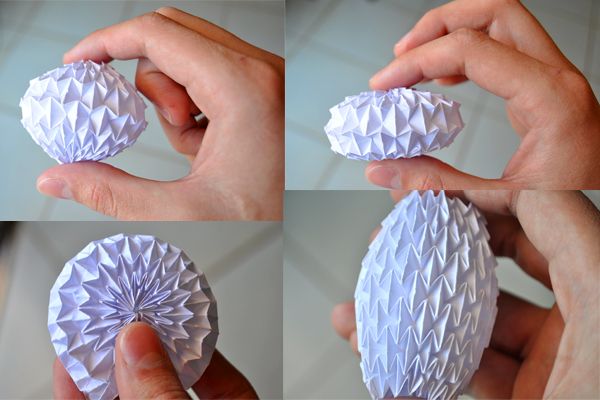Who is an origamist or origamian; Who are called origamists?
Who is a famous origami artist? What are their contributions to the craft? One renowned origami artist is Akira Yoshizawa, often considered the father of modern origami. He revolutionized the craft in the mid-20th century by creating innovative folding techniques and introducing a systematic set of symbols for origami diagrams.

Yoshizawa's contributions elevated origami from a traditional craft to a recognized form of artistic expression. His work inspired many artists, and he played a crucial role in popularizing origami as both an art form and a hobby worldwide.
The word “origami” derives from two Japanese words: Ori (to fold) and Kami (paper).
In earlier times, this art was called “Orikata” (folded shape).
The word "kami", which means paper in Japanese, is written in the same way as the word meaning spirit or god in Japanese, and some origami models took part in Japanese religious ceremonies.
An origamist or an origamian is a person who is associated with the art of origami.
Japanese Samurai gave each other gifts called "noshi", which consisted of paper folded around a thin slice of fish, and these were seen as signs of good luck.
According to an old Japanese legend, if you fold a thousand cranes, one of your wishes will come true.
In traditional origami, a square paper is used, and cutting the paper is not allowed.
Origami Records
There are dozens of records on this subject in the Guinness Book of Records, and some of them are the records for the highest number of folds, the smallest and largest origami, and the records for folding 100 cranes in the shortest time.
The longest recorded flight of an origami airplane indoors is 22.48 seconds and belongs to Takuo Toda, who is considered to have invented the paper airplane.
The smallest origami crane in the world was made by Naito Akira using a plastic film measuring 0.1 mm x 0.1 mm.
The world's largest origami crane is approximately 78 meters long.
The play "Paper Animals" staged in New York is about origami and the three main characters in the play are engaged in the art of paper folding.
National origami associations have been established in various countries around the world and these countries include the USA, Japan, France, Netherlands, United Kingdom, Spain, Germany, Australia, Italy, Poland, Russia, and China. The first of these to be established was the British Origami Association in London in 1967.
One of the characters in the PlayStation 3 video game Heavy Rain is a serial killer who lives behind an origami model and orchid.
The largest number of cranes ever slaughtered was during the 50th anniversary of the atomic bombing of Hiroshima. A total of 250,000 paper cranes were folded and displayed at the grand memorial in the city. A short message of peace is written on each model along with a person's name. The paper crane bird is a symbol representing world peace.
The world's oldest origami illustration was made by Johannes di Sacrobesco in Venice in 1490 and depicts paper boats floating on water.
List of famous origamists
Jay Ansill – composer and folk musician who also wrote The Origami Sourcebook
Mel Cowley - British Origamist working in the UK. In 2014 he founded The Little Paper Flower Shop. He creates original Origami Flower Bouquets and uses Origami Paper Cranes as symbols of Good Luck & Long Life in much of her work
Martin Demaine and Erik Demaine – father-and-son team who manipulated flat paper into swirling forms.
Peter Engel – author of several origami books including Origami from Angelfish to Zen, 10-Fold Origami: Fabulous Paperfolds You Can Make in Just 10 Steps!, and Origami Odyssey
Tomoko Fuse – famous for boxes and unit origami
Ilan Garibi – Israeli origami artist and designer
Alice Gray – co-founder of the non-profit Friends of the Origami Center in New York
Florence Temko – a pioneer in spreading origami in the United States
Norio Torimoto – Japanese origami artist based in Sweden since the 1970s
Kōshō Uchiyama – Sōtō priest, origami master, and abbot of Antai-ji near Kyoto, Japan, and author of more than twenty books on Zen Buddhism and origami
Miguel de Unamuno – Spanish essayist, novelist, poet, playwright, and philosopher who devised many new models and popularized origami in Spain and South America.
Makoto Yamaguchi – Chairperson of Origami House.
Akira Yoshizawa – reinvented modern origami and created the modern repertoire of folding symbols.
